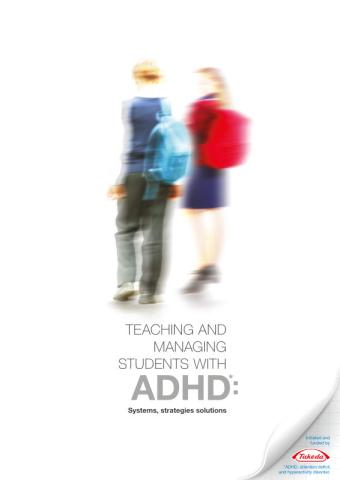What is ADHD?
 It is widely accepted that ADHD is a developmental condition that can be formally diagnosed.
It is widely accepted that ADHD is a developmental condition that can be formally diagnosed.
ADHD is a term that is used to describe students who typically have the following problems:
- Overactive behaviour (hyperactivity)
- Impulsive behaviour
- Difficulty in paying attention and distractibility (inattention)
 Students typically have a short attention span and so can find it hard to concentrate and learn, especially in group situations. This can impact on their education and many of these students underachieve at school.
Students typically have a short attention span and so can find it hard to concentrate and learn, especially in group situations. This can impact on their education and many of these students underachieve at school.
It is important to recognise that not all students with ADHD have all the symptoms. There are three presentations of ADHD according to the American Psychiatric Association’s diagnostic scheme (Diagnostic and Statistical Manual of Mental Disorders, Fifth Edition [DSM-5]) classification.
The three presentations of ADHD
- ADHD (inattentive presentation) describes students who mainly have problems with concentration and attention span but who are not usually impulsive or overactive
- ADHD (hyperactive/impulsive presentation) describes students who predominantly have problems with overactive and impulsive development
- ADHD (combined presentation) is where symptoms from the ADHD hyperactive/impulsive and ADHD inattentive combine, and is the most severe form of the condition
ADHD is included in the 2015 version of the SEND (Special Educational Needs and Disability) Code of Practice under the SEND category Social Emotional and Mental Health (SEMH).
Resources for download
Useful Links
Patient support organisations
- UKAP – the UK ADHD Partnership – https://www.ukadhd.com
- ADHD Foundation – Schools – https://adhdfoundation.org.uk/
- Young Minds – ADHD and mental health – https://www.youngminds.org.uk/parent/a-z-guide/adhd/
- The National Attention Deficit Information and Support Service (ADDISS) – https://www.addiss.co.uk
- Scottish ADHD coalition – https://www.scottishadhdcoalition.org
Professional organisations
- National Association for Special Educational Needs (NASEN) – https://www.nasen.org.uk
- National Health Service – Overview ADHD – https://www.nhs.uk/conditions/attention-deficit-hyperactivity-disorder-adhd/
- National Institute for Health and Care Excellence (NICE) guideline NG87 – Information for the public – https://www.nice.org.uk/guidance/ng87/informationforpublic
You are now leaving www.adhdandyou.co.uk. You will be re-directed to an external website. Takeda accepts no responsibilty for the content of other websites.

